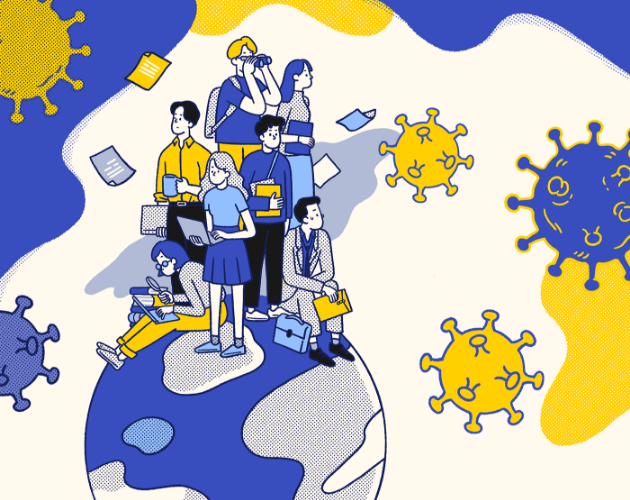The concept of User Journey is vital to understanding the journey a business's customers take when interacting with the product, service, or business. It is important to understand how customers are passing through the road and reaching the goals that have commercial value for you, to clear the stones on the road, to increase the comfort of the journey and consequently to facilitate more people to reach this point.
It may be possible to examine your potential customers through a user journey through the sales funnel experience that turns them into customers. You can evaluate the needs and feelings that lead people to you, plan a perfect sales funnel, then compare the current funnel with the perfect one and identify the problems between them. When you think in terms of a website; User journey planning allows you to optimize the user journey starting from the landing page to the destination.
Also, having a user journey map allows you to focus your resources where it matters most. Problems arise on the way people move towards purchasing, and points are where you should focus your resources. Every improvement you make on this map will be directly reflected in your sales amount.
Throughout this article, we will try to understand the tricks of creating a more effective user journey map through examples.
1. Choose the Right Person
Finding a ready-made user journey map is impossible. The journeys users take to purchase products and services are unique. This journey is specific to the product and human. It needs to be redesigned for every business and every product. While preparing the user journey of your own business, you can choose an exemplary person, namely persona, or plan on an imaginary persona that you think represents a customer segment. Once a customer journey is designed for a persona, the customer stages, goals, touchpoints, opportunities, etc. It can be applied to other customers by creating a common understanding of it.
Further reading: 8 Common Target Audience Identification Mistakes Made by Businesses
Two important things to focus on are motivation and emotions. Motivations include actions that help the user move forward in the experience. Emotions are instrumental in determining whether users like your experience or want to give up on it.
Let's consider the scenario of a potential video game buyer. I will keep the stages simple so as not to distract from the purpose of the content. The person we will discuss for this journey map is Bilal, his director of finance. 42 years old, high-income, living in Istanbul and generally very busy. You can go as detailed as possible for the persona.
2. Create Your Travel Map Strategies
Now we have a human. It's time to build the steps that a person must go through until they reach our product. Our user will reach a goal at every stage, be happy with this goal and be motivated for the other goal.
It is up to you to construct these goals in simple or complex structures. When you set very complex goals, your customer may get tired at these stages. The important thing is that all stages progress linearly and each step is directly related to the product.
The possible steps of the journey that we plan to end with purchasing a video game can be as follows;
- Previous experience with games
- Awareness of our new video game (1st touchpoint)
- Choosing the video game
- Purchasing the video game
- Playing the video game
- Sharing the experience
3. Describe Actions, Thoughts, and Feelings
Each stage of the journey includes various key elements. These elements can be grouped under three main headings; actions, thoughts and feelings ...
Actions describe what the person is doing at that stage of the journey. Thoughts include everything that is happening in the customer's mind about the product or service. Emotions are to describe the dominant mood of the user as they move from one stage to the next. This is important because a business can earn more when the user experience it offers results in more positive emotions and retains customers.
Further reading: Understanding Human Behaviors for UI and UX Design
Let's examine one of the titles we have identified above, based on our example; "Choosing the video game".
- Actions: There should be options such as reading comments about the game, browsing review articles, reviewing the rating of the game, and watching the trailer.
- Thoughts: Price-related considerations, aesthetic responses, associating with previously played games.
- Emotions: Uncertainty, excitement, and indecision
4. Consider Contact Points and Channels
Contact points are when the customer interacts with the business or interface. Channels, on the other hand, are generally related to communication or service delivery methods. This could be anything including a website, mobile app, or physical store.
Further reading: The Design Balance Between Users, Habits, Device Technologies, and Screen Sizes
Continuing with our example, possible channels and contact points could be; an ad in a mobile app, an item in the game console store, a post on game review sites, a gamer in a friend chat ...
5. See Opportunities and Barriers
At this stage, focus on the opportunities and obstacles that naturally occur within the user's experience. How opportunities and obstacles you missed in initial planning affect the customer's journey. This is where it will allow you to grow with continuous improvement and UX investment.
Further reading: What Is The Relationship Between UI / UX? What Is Not?
You can identify all pain points that may negatively affect the purchase of the product and achieve beneficial results with improvements. Such as improving the experience in the application store, diversifying the payment methods ...Personanız tarafından alınan her aşama size fırsatlar da doğurabilir. Yeni kullanıcılara özel indirimler sunmak, oyundaki ilerlemelerini arkadaşları ile paylaşmaya davet etmek gibi.
Last word
When you decide to plan a user's journey, we have a few tips to keep in mind;
- Be Understandable: Keep all your strategy, stages, and plan simple. Build this plan linearly at a level that can be explained and applied on the marketing team, social media and advertising platforms. A planning that is too complex to be implemented will be just a fairy tale.
- Identify Your Needs: Make a list of people's touchpoints and types of content specific to the channels they will contact. What will you need? Having a list for all content will make it easier for you to get started.
- Remember Your Purpose: A user journey map can be made for multiple purposes. Do you want to improve an existing journey or is your aim to design a new experience from the beginning?
- Remember That The Picture You Call Persona Is A Real Person: People are not data. You can only represent people with human data. Behind the definition you call persona are real people, and the factors that influence these people's behavior are almost infinite. We don't know the emotions, motivations of those people, the first thing that comes to mind when they wake up in the morning. For this, do not overlook the fact that the plans need to be constantly monitored and updated.
.png)
.png)


